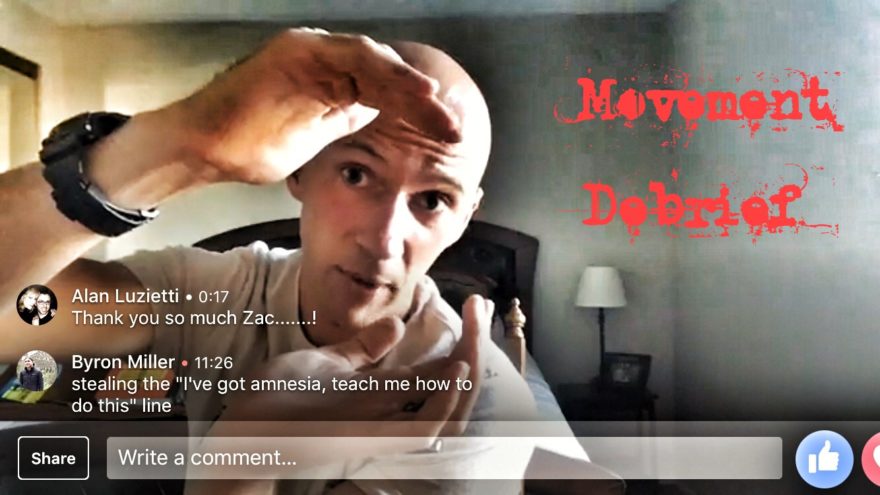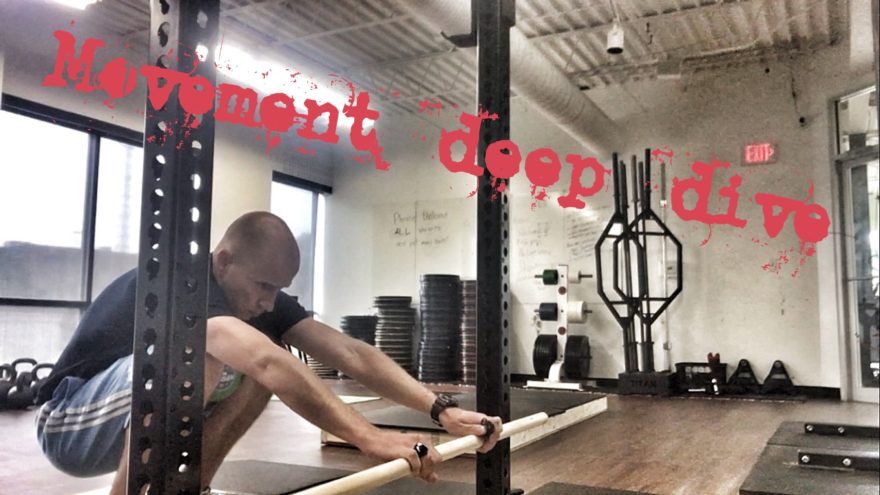Every week, my newsletter subscribers get links to some of the goodies that I’ve come across on the internets. Here were the goodies that my peeps got their learn on from this past July. If you want to get a copy of my weekend learning goodies every Friday, fill out the form below. That way you can brag to all your friends about the cool things you’ve learned over the weekend. [yikes-mailchimp form=”1″ submit=”Hell yes I want weekend learning goodies every Friday!”] Biggest Lesson of the Month Maximize proximal before spending time distal. I’ve just seen too many patients where we applied some type of axial intervention, which led to profound changes distally. Position governs all. Thank you for making me realize this daddy-o. Quote of the Month Only those who dare to fail greatly can ever achieve greatly. ~Robert Kennedy Rehabilitation Blog: What is the Best Test to Discern an ACL Tear? My boy Scott Gray put together a rock solid post on diagnosing an ACL tear. I’ve been very big as of late on filling the differential diagnosis hole in my game, and this one was beyond helpful. I wish I had heard of the lever test last year when I had a guy pop his ACL in-game. Blog: The Quadruped Rockback Test: RIP My buddy Doug Kechijian ever so succinctly puts this dated test to rest. There is so much more that goes into deciding squat depth than can be accurately accounted for with this test. Performance Research: The effects of two
Read MoreTag: squat

Master Sagittal Plane, Coaching Progressions, Detaching, & TFL Inhibition – Movement Debrief Episode 5
Did you miss Movement Debrief live yesterday? Though much more fun live, I have a video of what we discussed below. This debrief was quite fun, as we had an impromptu viewer q&a. Thank you Alan Luzietti for the awesome questions! If you follow along live on Facebook or Youtube, I will do my best to answer any questions you ask. Yesterday we discussed the following topics: Why you should emphasize sagittal plane activities longer than you think How to coach exercises to maximize client learning and compliance Why detaching from your client encounters makes you a better clinician Viewer Q&A – “centering from the chaos” & TFL Inhibition Lastly, if you want the acute:chronic workload calculator I spoke about, click here. Without further ado: Master Sagittal Plane Coaching Progressions Detaching Refocusing TFL Inhibition
Read More
The Squatting Bar Reach: A Movement Deep Dive
Aka How I Mastered the Sagittal Plane In our first episode of “Movement Deep Dive,” we go over one of my favorite moves, the squatting bar reach. It’s an excellent technique and I hope this video explanation is helpful. If videos aren’t your thing, I’ve provided a modified transcript below. I would recommend reading and watching to get the most out of the material. Learn on!
Read MoreMovement Chapter 9: Analyzing the Movements in Screens and Assessments
This is a chapter 9 summary of the book “Movement” by Gray Cook. While I have broken up these sections into patterns, much of what Gray talks about does not involve the patterns themselves, but are still good points to know. Ergo, much like the book itself, this post may seem a little disjointed 🙂 The Deep Squat One’s inability to squat is not considered a single problem. Instead, a disconnect is present between the body and the brain in the squatting pattern. Our brain sees things in patterns, and the squatting pattern essentially gets smudged. Before performing the squat as an exercise, we must first groove an optimal movement pattern. One interesting point regarding the squat is that as an exercise it is often a top-down based movement. However, when we learn to squat in development, the movement occurs bottom-up. So one way to train the squat is by starting from the bottom of the squat and working to standing. This method ensures full mobility to perform a full deep squat. To relate the SFMA to the squat pattern, Gray is very clear about not training the squat if one cannot touch his or her toes. Hurdle Step and Single Leg Stance These two movements simultaneously test mobility and stability of both legs. Oftentimes in these patterns you will see a high-threshold strategy (HTS), in which a hyper-protective core response occurs. Research demonstrates that this stabilization strategy can cause poor motor control to occur. These tests also are basic
Read MoreMovement Chapter 8: SFMA Assessment Breakout Descriptions and Flowcharts
This is a chapter 8 summary of the book “Movement” by Gray Cook. What to Look For The SFMA breakouts are utilized to determine if one’s movement deficiencies have a mobility or stability origin. There are further possibilities in each of these categories. It Could Be a Mobility Problem There are two subsets of mobility problems that include tissue extensibility dysfunction (TED) and joint mobility dysfunction (JMD). From here, we can break it down even further in each subset. Here are some potential TEDs Active/passive muscle insufficiency Limited neurodynamics (they said neural tension; come on Gray!) Fascial tension Muscle shortening Hypertrophy Trigger points Scarring/fibrosis And here are some potential JMDs Osteoarthritis/arthrosis Single-joint muscle spasm/guarding Fusion Subluxation Adhesive capsulitis Dislocation It could be a Stability Problem These issues are also known as stability or motor control dysfunction (SMCD). Most conventional therapies would treat these complaints by strengthening the stabilizers, but this is problematic. When something works reflexively, how can we train something volitionally and expect changes? To train these muscles we must focus on proprioceptive and timing-based training. There are several examples of SMCD problems. Motor control dysfunction. High threshold strategy. Local muscle dysfunction/asymmetry. Mechanical breathing dysfunction. Prime mover or global muscle compensation behavior or asymmetry. Poor static stability, alignment, postural control, asymmetry, and structural integrity. Poor dynamic stability, alignment, postural control, asymmetry, and structural integrity. Relatedness Mobility and stability can influence one another. If I were to lose mobility at one segment, motor control can be distorted at nearby segments.
Read MoreMovement Chapter 6: Functional Movement Screen Descriptions
This is a chapter 6 summary of the book “Movement” by Gray Cook. Screening Keys The FMS is not considered a training or competition tool; it simply ranks movements. Here are the keys to a successful screen. First off, know the following bony landmarks Tibial tuberosity ASIS Lateral and medial malleoli Most distal wrist crease Knee joint line 3 repetitions are performed for each movement, and it is important to stand far away so the whole movement can be seen. When testing both sides, take the lowest score if an asymmetry is present. Here are the movements (videos courtesy of Smart Group Training). The Deep Squat Purpose: Full-body coordinated mobility and stability; linking the hips and the shoulders. Here is how it is done. Hurdle Step Purpose: Evaluate stepping and stride mechanics. Here is how it is done. Inline Lunge Purpose: Test deceleration and left/right function utilizing contralateral upper extremity patterns and ipsilateral lower extremity patterns. Here is how it is done. Shoulder Mobility Purpose: Evaluate scapulothoracic rhythm, thoracic spine and rib mobility. Here is how it is done. ASLR Purpose: Tests hip flexion, hip extension, and core function. Here is how it is done. Trunk Stability Pushup Purpose: Tests reflexive core stability. Here is how it is done. Rotary Stability Purpose: Check multi-planar pelvic, core, and shoulder girdle stability. Also looks at reflexive stability and transverse plane weight shifting. Here is how it is done. FMS Conclusions The FMS is designed to give a corrective pathway that may involve
Read More